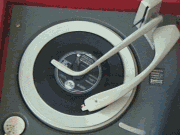During the period 1964 - 1985 the answer is 75 million (74,786,835 million to be exact). During the period 1991 - 2008 the answer is 57 million (source: SoundScan results quoted in Randy Lewis, “Beatles’ catalog will be reissued Sept. 9 in remastered versions,” Los Angeles Times, April 8, 2009). My informed estimate is that during the period 1986 - 1990 they sold approximately 1.5 million albums per year, for a total of approximately 7.5 million. Thus the answer to the question is approximately 139.5 million albums since 1964.
Here’s how I arrived at early sales data. In 1985 I was Vice President of Capitol Records and one of my jobs was overseeing the marketing of Beatles records in the U.S. This required more finesse than one might think because the Beatles constantly were suing Capitol (not to mention each other) over one thing or another. The nuances of the Beatles’ contracts and exactly what they were suing about is an interesting topic in its own right. But for right now I’d like to concentrate on sales. The table summarizes net U.S. sales of Beatles albums during the period 1964 - 1985 and the figure visually depicts the same information. Beatles sales comprised some 25% - 30% of Capitol’s total sales during this period.
 It’s possible to derive some tentative conclusions from this data.
It’s possible to derive some tentative conclusions from this data.
First, sales generally declined after 1975, only to be resuscitated in 1980 and 1981 by the unfortunate death of John Lennon. Sales reached an all-time low in 1983, improving only slightly in 1984 and 1985.
Second, the sales and returns behavior of the band’s last album of new material resembled most conventional pop product in that it had a short product life cycle. It was shipped heavy on initial release only to confront subsequent returns and much lower sales. “Rarities,” released in March 1980, had gross U.S. sales of 380 thousand units in the first 15 weeks following its release - approximately 80% of its total gross sales at the end of 52 weeks. Returns at the end of 52 weeks were approximately 13% of gross sales. After that net sales scarcely were sufficient to justify the album’s continued inclusion in the active catalog. This high degree of sales velocity indicates the album appealed to a relatively small cadre of followers who either acquired it quickly or not at all.
Third, the sales performance of the then-most-recent compilation albums was poor. “Reel Music” (released in March 1982) achieved net sales of only 225 thousand units. In 1983 and 1984 returns exceeded gross sales. While “20 Greatest Hits” (released in October 1982) did somewhat better, it still was the lowest-selling compilation album after “Reel Music.” Was there a genuine fall-off in demand for Beatles records? Or was Capitol simply unable to devise, implement and maintain the requisite sales and marketing strategies to bolster sales? The simple fact of the matter is that the advent of the CD circa 1985 saved both Capitol’s and the Beatles’ respective butts. The rest is history with re-issues, remastered versions, new compilations and the like.
OK here are the small-print caveats. This information was compiled right at the advent of CDs (in fact the reason why it was pulled together to begin with was in connection with whether Capitol even had the right to issue Beatles CDs). It doesn’t include anything after 1985. It’s albums only and not the kajillions of singles they also sold. It includes all configurations of albums that were then-existing, including LPs, 8-track cartridges, cassettes and picture discs. It includes records that were manufactured in the U.S. but then exported elsewhere. It does not include records that were manufactured in Canada or anywhere else outside of the U.S. It does not include bootlegs, solo records, or records derived from masters not recorded for EMI (such as the Vee-Jay brouhaha and records released by United Artists that were the soundtracks of the Beatles’ movies, until Capitol acquired United Artists). Nor does it include records that were handed out the back door, given away as free goods or record club freebies, if some of the Beatles’ lawsuit allegations are to be believed. All of this information is public record in various court files so I’m not disclosing anything that’s secret.
Now if I only could get my hands on some Rolling Stones sales info ….
by David Kronemyer
Story References: » Deconstructing Pop Culture: How Many Records Did the Beatles Actually Sell?, by David Kronemyer, Beatles SoundScan results, remastered, Vice President of Capitol Records, Wed, 29 Apr 2009, © Music Industry Newswire™































No comments:
Post a Comment